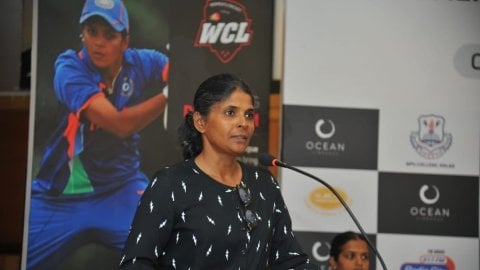
In T20s: The commencement of the Senior Women's Inter-Zonal Multi-Day Trophy in Pune from March 28 will signal the revival of red-ball cricket for female cricketers in the Indian domestic circuit, following a six-year absence.
Women cricketers in India last played red-ball cricket in the domestic circuit during the 2017-18 season, with matches lasting three days. The tournament is now coming back after India's back-to-back victories in one-off Tests against England and Australia in December 2023.
Taking the bigger picture into consideration, Mamatha Maben, the former India captain, believes that bringing back red-ball matches for women's cricket will prove to be advantageous. “In the long run, it being a foundational format, should prove to be the best thing to have ever happened. Now that women’s cricket is growing, unless they don’t have that foundation, they will not be able to go high.”

